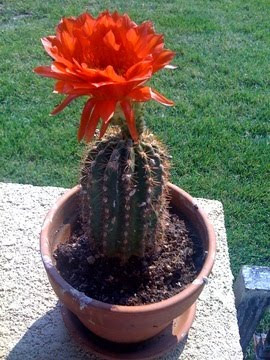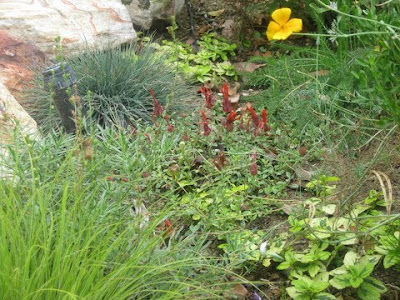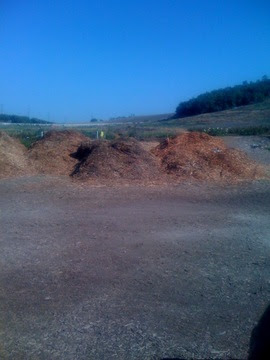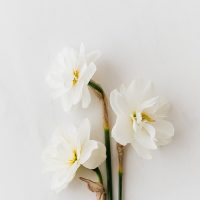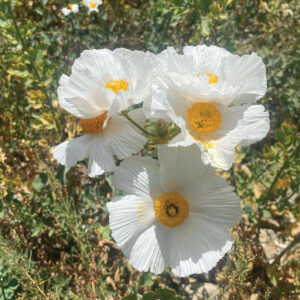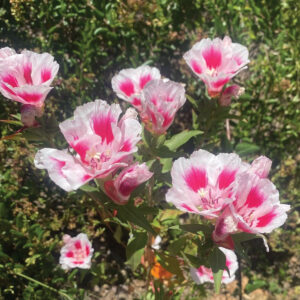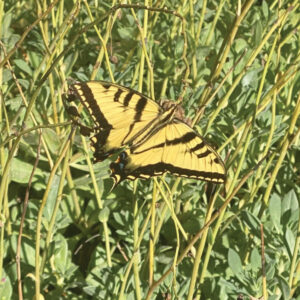It’s time to fall back! Daylight savings time is coming to an end, so that means the days are growing shorter – so you have to make the most of your gardening time. Here is your November list of chores.
November is the time to trim evergreen shrubs; you can also remove & replace overgrown shrubs if necessary.
Would you like a new colorful deciduous tree? This is another good month to pick that tree. If you select while the leaves are changing you are more likely to get just the color you like best. But don’t wait too long… those leaves are falling fast!
You can plant cool-season try some chives & parsley. You can pot up summer herbs & bring them into the kitchen. Your rosemary, sage, oregano, and thyme should continue to flourish through most of the year.
If you haven’t planted cool weather veggies, you’d better start now. There is more detailed information on veggies and herbs in my post How to Grow Winter Vegetables In Southern California for more details.
Fall cleaning is in order, clear out around fruit trees, discard split fruit, check those berries and remove raspberry and blackberry plant canes.
You can plant new citrus trees too; there are still plenty to choose from in most nurseries. If you find bare root fruit trees you can plant them too – mail order will probably be the best way to find them now as the nurseries are starting to make room for Holiday plants.
Other bare root plants you can look for are trees, roses, shrubs, and vines – these can be planted right through January or February in Southern California.
You can prune fall and winter flowering vines and shrubs after they have finished blooming. If you are planting during all your seasons, you’ll have plenty to watch and plenty to do in your garden
Planting winter blooming shrubs vines, and perennials is definitely on the list for this month. Get them in and established and your winter bloomers will give you a great show. Clivia, Ceanothus, Carolina Jessamine, Hardenbergia, Breath of Heaven, and Cyclamen (good Christmas décor!)
You can divide flowering perennials & ground cover – lily turf, irises, agapanthus, day lily plants.
Mulch over tender bulbs (cannas, caladiums, dahlias, tuberous begonias & gladioli)
If your cacti and succulents have bloomed and are over growing their containers, it is a good time to repot them.
You should plant winter annuals – ageratum, begonia, petunia, sweet alyssum, and pansies for winter color.
You can plant new cutting grown Ceanothus plants because the weather is cool and the soil is still a little warm. In general if you can plant your Ceanothus (and most all California natives) during the winter instead of the summer, they will do much better
WATERING NOTE: Up to 80 percent of residential water use goes to maintaining our yards. Is your irrigation system running every day? That’s too much! Try taking a day off the timer, preferably the same day the lawn is mowed, and watch the health of your yard improve. If that day is off already… take another one off. If you live in Santa Clarita you should take advantage of your opportunity to obtain a free Weather Based Irrigation Timer. Call Rene Emeterio of SLM at 805-520-7590. You’ll have a short class to attend, but your landscape and your water bill will be better off for it! You can also contact me for additional information.
Fertilizing:
This should be your last fertilizer application of the year—that includes your lawn! So don’t let this opportunity slip by. You’ll want to feed citrus trees with a citrus fertilizer at a rate of 1 pound per foot of tree spread.
This is also a great time to fertilize summer bloomers with a high organic phosphorus fertilizer. The phosphorus takes some time to absorb into the plant so November application will mean May – July flowering plants. Remember that the organics will be dog attractants, so be sure to keep an eye on those digging pups!
Note for Palm Trees, shrubs, and ornamentals:
I like slow-release fertilizers because they provide a steady supply of nutrients for the plants over a long period of time. The main advantage of a slow release fertilizer is its convenience. As you can imagine, slow release fertilizers do not need to be applied as often as water-soluble fertilizers. The optimum fertilizer regimen is three applications per year: once in early spring, once in early summer, and once in late fall. Use a balanced fertilizer (equal numbers) with micro-nutrients.
It is also time to cut back on fertilizing your houseplants as well. Make sure not to feed dormant houseplants!
Don’t forget your compost! You can add a thin layer of compost to just about everything – your houseplants & lawn included!
The beautiful garden path above is at the home of and my collaboration with the wonderful Interior Designer Tami Smight. Together we make up half of The Harmonious Home Team. Take a look on my side bar to learn more about my team. Kim Rocke, Elaine Giftos-Wright, Tami Smight and I can help you with every aspect of your Home – we will create a Harmonious Home!
For more about my designs: thegrassisalwaysgreener







